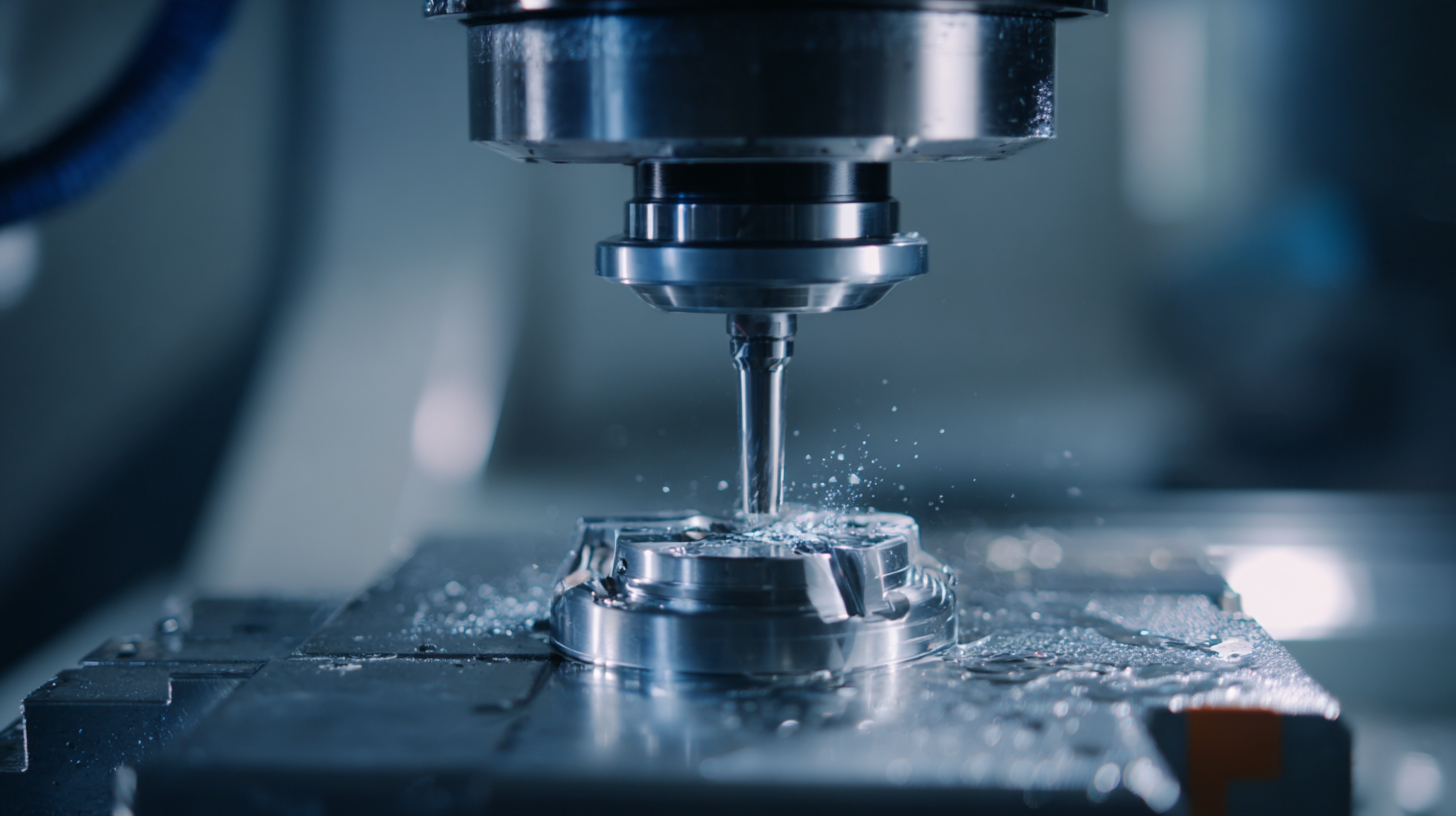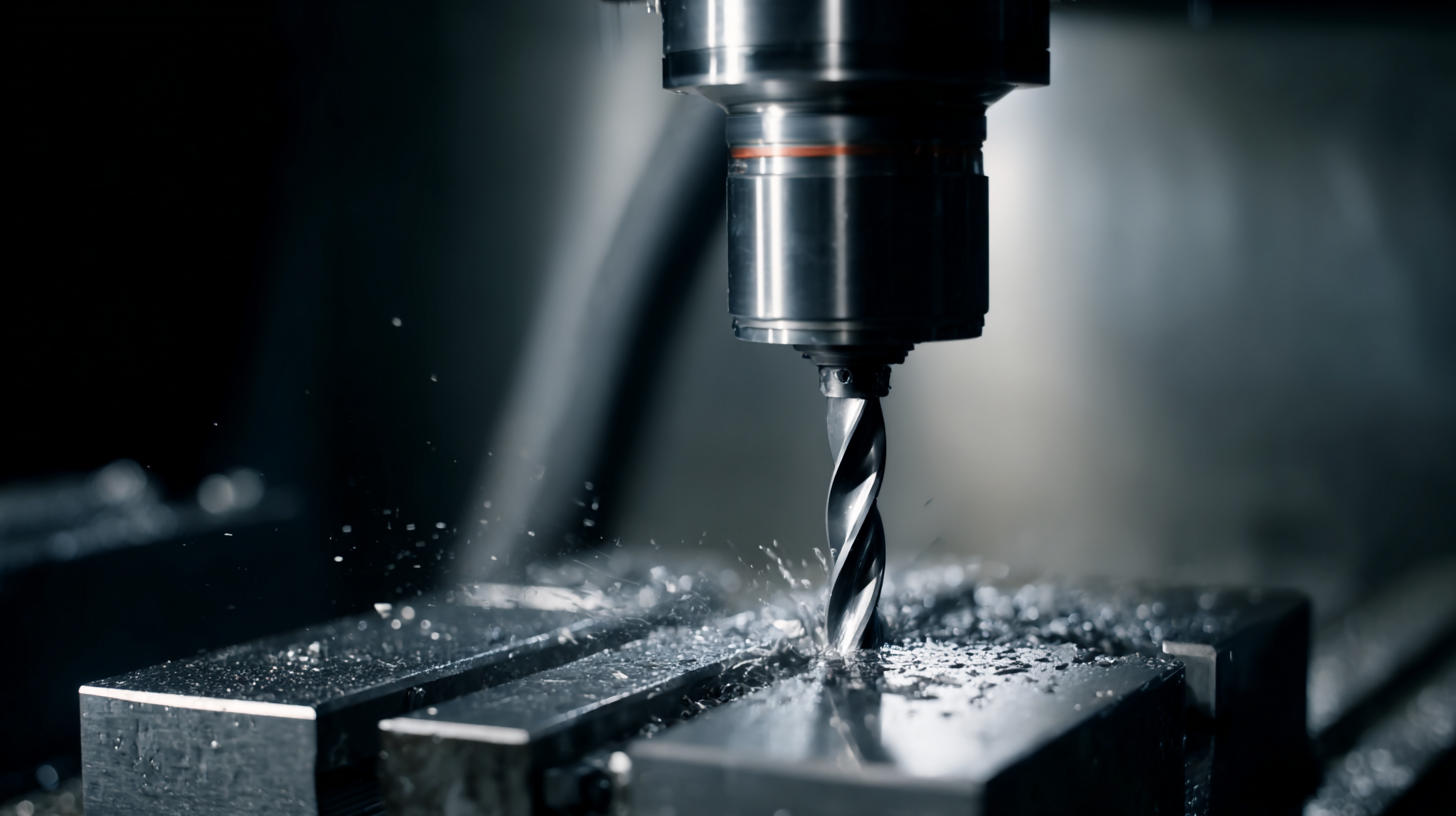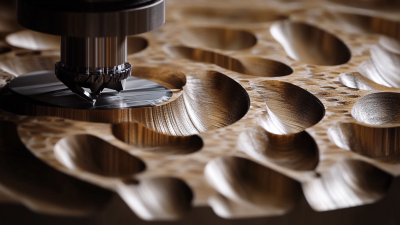Maximizing Precision and Efficiency: The Future of CNC Cutting in Advanced Manufacturing
As the landscape of advanced manufacturing continues to evolve, the integration of digital technologies is revolutionizing traditional practices, particularly in CNC Cutting processes. This paradigm shift is not merely a technological upgrade; it represents a comprehensive transformation that optimizes precision and enhances efficiency. In an industry where accuracy is paramount, the adoption of smart CNC systems facilitates real-time monitoring, data analytics, and automation, allowing manufacturers to refine their workflows and reduce material waste significantly.

Furthermore, the implementation of best practices in CNC Cutting not only boosts operational performance but also positions companies competitively in a rapidly changing market. This essay will explore the innovative advancements in CNC technology, the role of digital integration, and the vital strategies for maximizing both precision and efficiency in modern manufacturing environments.
The Role of CNC Technology in Streamlining Manufacturing Processes
CNC technology has revolutionized manufacturing processes across various industries, offering unparalleled precision and efficiency. As manufacturers increasingly adopt advanced digital manufacturing techniques, the demand for high-precision tasks continues to rise. CNC cutting machines provide the accuracy required for complex designs while ensuring that operations remain streamlined and cost-effective. This shift towards automation not only enhances productivity but also helps companies reduce waste and environmental impact through the use of environmentally friendly machinery.
**Tips:** When integrating CNC technology into your manufacturing workflow, consider starting with a pilot project to gauge its effectiveness. This allows you to assess the benefits and identify potential challenges without committing fully to a large-scale transformation. Additionally, investing in staff training is essential to maximize the efficiency of CNC systems. Well-trained operators can leverage the full potential of these machines, ultimately leading to superior production outcomes.
As companies transition from traditional methods to automated solutions, the role of CNC technology becomes increasingly crucial. By optimizing manufacturing processes, businesses can meet the growing demands of the market while maintaining high standards of quality and sustainability. Embracing these advancements not only facilitates smoother operations but also positions manufacturers at the forefront of innovation in their respective fields.
Innovative Materials and Their Impact on CNC Cutting Performance
 The advent of innovative materials is revolutionizing the landscape of CNC cutting in advanced manufacturing. With the emergence of composites, ceramics, and advanced polymers, manufacturers are challenged to adapt their CNC cutting techniques to accommodate these unique properties. For instance, carbon fiber reinforces the need for precise cutting parameters due to its abrasive nature while offering unparalleled strength-to-weight ratios. As a result, the development of specialized cutting tools that can handle such materials efficiently is imperative.
The advent of innovative materials is revolutionizing the landscape of CNC cutting in advanced manufacturing. With the emergence of composites, ceramics, and advanced polymers, manufacturers are challenged to adapt their CNC cutting techniques to accommodate these unique properties. For instance, carbon fiber reinforces the need for precise cutting parameters due to its abrasive nature while offering unparalleled strength-to-weight ratios. As a result, the development of specialized cutting tools that can handle such materials efficiently is imperative.
Moreover, these innovative materials often require tailored CNC programming strategies, which can significantly enhance cutting performance. The use of advanced software that integrates real-time data analytics enables manufacturers to optimize their cutting processes, thus maximizing precision while minimizing waste. As CNC equipment evolves, the integration of automation and smart technologies will further improve the efficiency of machining operations, allowing manufacturers to take full advantage of the advanced materials available in the market today. This synergy between cutting-edge materials and sophisticated CNC cutting technology will undoubtedly shape the future of manufacturing.
Best Practices for Maintaining Precision in CNC Operations
In the rapidly evolving landscape of advanced manufacturing, maintaining precision in CNC operations is paramount. According to industry reports, the global lathe machine market was valued at $25.01 billion in 2018 and is projected to reach $57.54 billion by 2032, growing at a remarkable compound annual growth rate of 5.6% during the forecast period. This growth underlines the increasing reliance on CNC technology for achieving high levels of accuracy and efficiency in machining processes.
Best practices for ensuring precision in CNC operations include regular calibration and maintenance of machines, employing high-quality cutting tools, and utilizing advanced software for optimizing tool paths. Consistent monitoring of machine performance and environmental conditions can further enhance precision, as even minor fluctuations can lead to significant deviations in output. By adhering to these best practices, manufacturers can not only improve product quality but also drive operational efficiency, ultimately positioning themselves competitively in a booming market.
Maximizing Precision and Efficiency: The Future of CNC Cutting in Advanced Manufacturing
| Dimension | Measurement Unit | Current Best Practice | Industry Standard | Improvement Potential (%) |
|---|---|---|---|---|
| Cutting Speed | m/min | 60-120 | 80-100 | 20 |
| Tool Change Time | seconds | 2-4 | 1-2 | 50 |
| Dimensional Accuracy | mm | ±0.01 | ±0.02 | 50 |
| Surface Finish Quality | µm Ra | 0.8-1.6 | 1.6-2.5 | 30 |
| Use of Automation | % of jobs automated | 75 | 60 | 25 |
Integrating Automation and AI to Enhance CNC Cutting Efficiency
The integration of automation and AI in CNC cutting processes is heralding a new era of efficiency and precision in advanced manufacturing. As the CNC machine market is projected to grow from $101.22 billion in 2025 to $195.59 billion by 2032, reflecting a CAGR of 9.9%, the adoption of AI technologies is becoming increasingly significant. AI is enabling smarter production planning, real-time monitoring of machine performance, and predictive maintenance, which significantly reduces downtime and optimizes resource usage.
Tips: One effective strategy for manufacturers looking to enhance CNC cutting efficiency is to invest in AI-driven software that analyzes production data to identify bottlenecks and suggest improvements. Additionally, the incorporation of intelligent robotics can facilitate complex tasks and improve overall workflow.
Furthermore, the first mold to integrate AI agents in CNC machining management highlights the transformative potential of AI. By leveraging data analytics and machine learning, manufacturers can enhance decision-making processes, leading to improved quality control and reduced operational costs. As industries explore these advancements, the collaborative use of AI and automation will drive sustained growth and competitive advantage in the market.
Tips: Consider collaborating with technology partners to deploy AI solutions tailored to your specific manufacturing challenges. Continuous training and upskilling of personnel are also essential to fully leverage the benefits of these advancements.
Maximizing CNC Cutting Efficiency with Automation and AI
This chart illustrates the projected efficiency improvements in CNC cutting processes over the next five years as a result of integrating automation and AI technologies.
Future Trends in CNC Cutting Techniques for Advanced Manufacturing
The future of CNC cutting in advanced manufacturing is poised for significant evolution, driven by emerging trends and technologies that enhance precision and efficiency. As the UK manufacturing sector undergoes a revitalization, the demand for CNC services is surging. This resurgence highlights the essential role that advanced CNC cutting techniques play in meeting the needs of diverse industries. Innovations such as high-power laser cutting are gaining traction, offering precise cutting capabilities that streamline production processes. Furthermore, the integration of AI and digital technologies facilitates smarter manufacturing solutions that not only improve productivity but also adapt to varying production demands.
Europe's CNC machine market is expected to grow substantially, with projections indicating an acceleration in the adoption of advanced machinery. The segmentation by types, such as lathe and milling machines, reflects the diversification of applications within the sector. Increased investment in technology centers underscores the commitment to advancing CNC capabilities, ensuring that manufacturers stay competitive in a rapidly evolving market. Additionally, research in machining processes, like cryogenic and MQL-assisted techniques, reveals a focused shift towards innovative manufacturing methods that enhance both environmental sustainability and performance.

Related Posts
-

Exploring the Unique Features and Applications of CNC Cutting Across Industries
-

China's Smart Manufacturing Revolutionizes Global Demand for High Quality CNC Cutting
-

Essential Insights for Maximizing Efficiency with Cnc Plasma Cutters
-

Unlocking the Future of Manufacturing with Cnc Tools 2025 Trends and Essential Buying Guide
-

Common Issues Faced by Users of Cutting Machine Technology
-

What is the Best Drilling Machine? Exploring Features, Efficiency, and Global Trends in 2023
